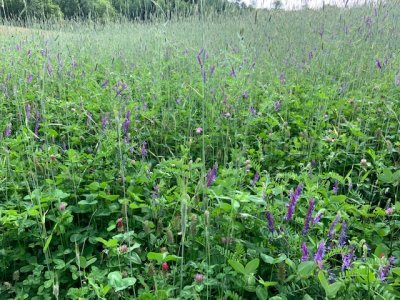yoderjac
5 year old buck +
Ok valid point but isn’t that assuming that the poop was from a nitrogen rich plant?
It would be really fun to study a food plot like this. Say a small 1/8 acre. Pull a soil test before planting and then yearly just to compare the N levels. Very curious as to how much they would change if the plot was constantly grazed down.
You are going to need a very specialized (and expensive) soil test as most don't measure N. Nitrogen can be quite volatile. Also keep in mind that as you observe your tiny plot's response to the 10-10-10 is that legumes seem to be pretty responsive to K and P.
Just a few more thoughts to pass on. With a 1/8 acre plot, there is no impact on deer, but consider the approach on a large enough scale to matter to the deer herd. Suppose I did intense food plotting planting significant acreage, fertilizing, and spraying weeds to maximize yield on a large scale. Sound pretty good from a deer herd perspective at first glance. But then, after 10 years, I get sick and can't do it any more and stop. Or, I sell the land and the next guy does nothing. Now what happens to the deer herd? Is it kind of like providing supplemental feed up north for years and then stopping?
Those are some of the things I thought about along the way. What I'm looking to do it to restore the soil health and bend nature to favor my target animals, deer and turkey. Greater acreage and lower intensity. More mix of crops and a healthy mix of weeds. The idea is that while improving the herd health over time, if I stop, things will move from fields through early succession to mature timber slowly over time allowing the herd to adapt to the changes.
Thanks,
Jack


